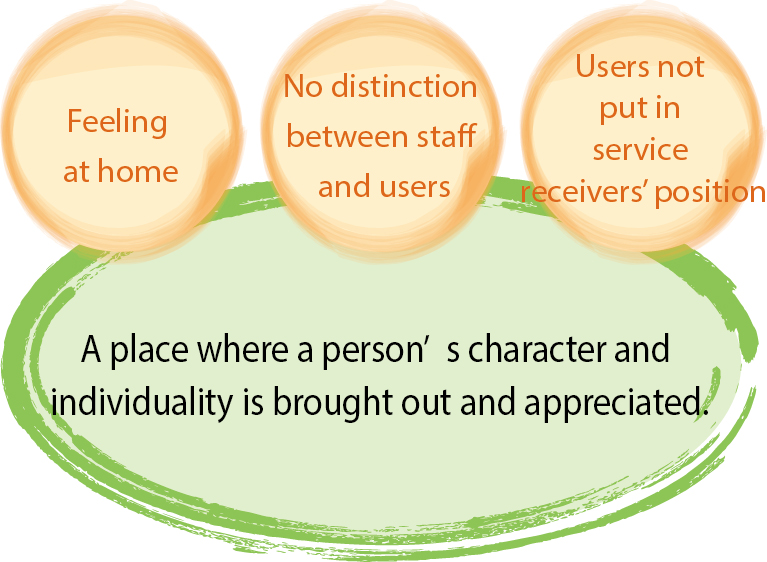The Base of Community Welfare
Shichiku – Parents’ Home Living Room (1)
“My Parents’ Home,” a permanent type of “Chiiki no Chanoma,” was closed after 10 years of operation. However, Ms. Kawada, hoping that the members could continue to meet one another as they wished, continued the activity and started again at the Community Center and named it the “Parents’ Home Living Room.” Later, it became a model project of building an integrated community care system that Niigata City worked on. Then, the model house of an integrated community care system “Shichiku – Living Room of Parents’ Home” was recreated through a collaborative management of Niigata City and an unincorporated association “Living Room of Parents’ Home Steering Committee.” Now, the Shichiku – Living Room of Parents’ Home attracts nationwide attention and it has been visited and observed almost every day. The Chiiki no Chanoma that Ms. Kawada opened has also spread to the entire country quite rapidly. What are in these places that Ms. Kawada creates such a difference? Everyone wants to know the secret of such special places and they take the trouble of coming all the way from distant places. The first thing I felt was I felt very much at home there, and I did not feel any distinction between the staff members and the users. They did not put users in a service receivers’ position. These are the main elements. I thought that the Living Room is not merely a place to be in but a place where each person’s character and individuality are drawn out and appreciated.Shichiku – Parents’ Home Living Room (2)
I went to Shichiku because I heard that on Mondays and Wednesdays, Ms. Keiko Kawada was there. Before I visited Shichiku, I had visited the Chiiki no Chanoma and My Parents’ Home many times. While Shichiku has the good qualities of these two organizations, it has evolved into something better, which continued to impress me. There were about 20 people in the large room of a house. Most of them were the local people. They said, “This facility is really helpful,” “We were rejuvenated because of this facility” and so on. They shared their joy as if they were proud of their parents’ home. Both men and women did something they could do spontaneously, and it seemed that they had found something to live for. I deeply felt that this place was not only a place where people gather together but it had become the place for “living,” where the “cycle of life” advocated by Professor Hiroshi Shimizu* was taking place. With this thought, I spent a little more than half a day there. Although it was my first visit there, some 20 local people entertained me warmly as if they were treating their own family member who came home. I am sure that this will become a place of welfare tourism that people from other countries will visit. I cannot help praying that this kind of place will spread all over Japan, leading the country to a “major anxiety-free nation.”
* Mr. Hiroshi Shimizu: President of “Ba-no-kenkyujo” (NPO); an honorary professor of the University of Tokyo, the proponent of the Theory of Ba (place/space). Offering “life” means to offer one’s “life” without considering profit or loss. Offering a “life cycle” means that when creatures offer their lives to a place, the place itself will offer back its “life” to the creatures, and that is how the cycle continues.
Shichiku – Parents’ Home Living Room (3)
For the operations of Shichiku, Niigata City shoulders only the rent and utility expenses. All the other expenses are shouldered by the admission fee of ¥300 a day, the supporting member’s fee of ¥2,000 from the people except for Shichiku, and the income from the bazaar selling donated items which has been held continuously. This means Shichiku is needed by the people in the community. I firmly believe that this is the model of a “co-existing community” and the hope of a super-ageing society.



